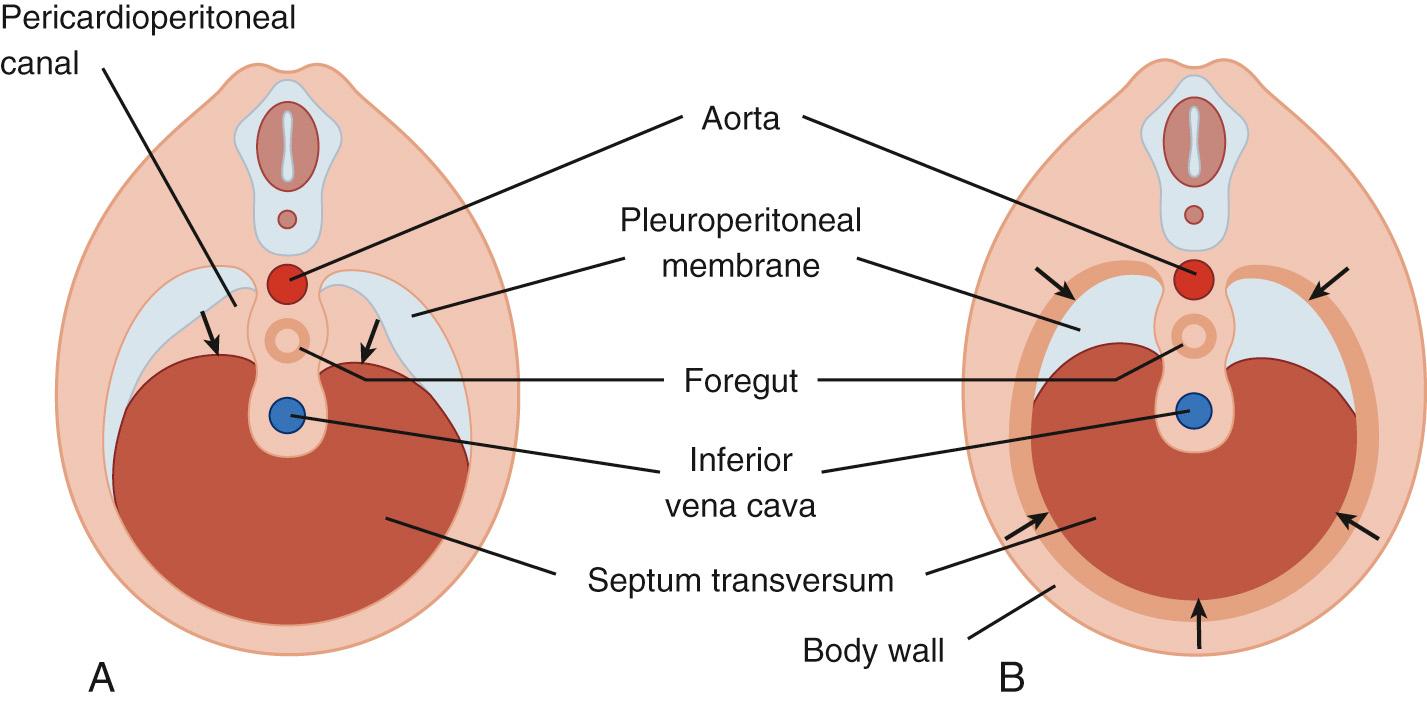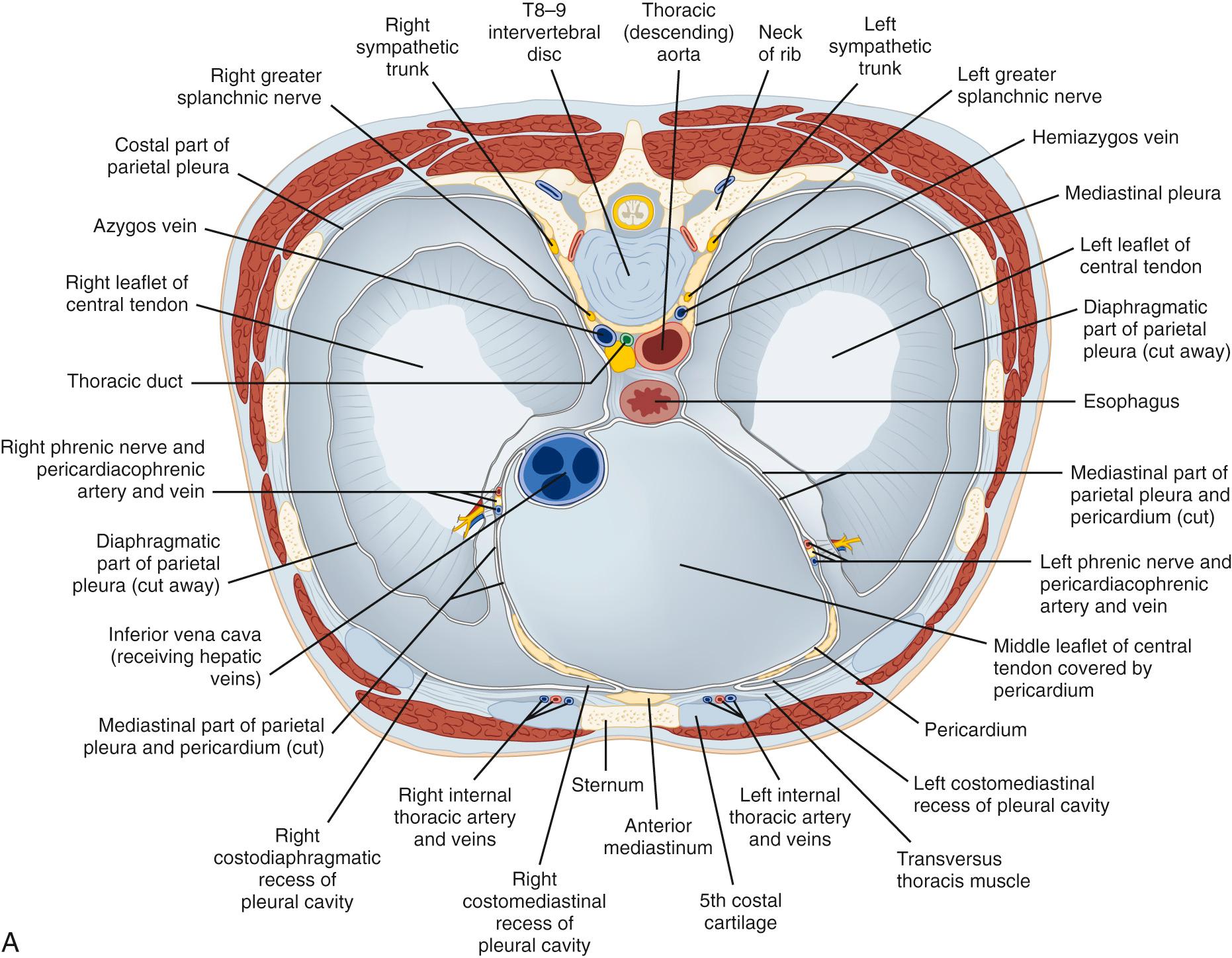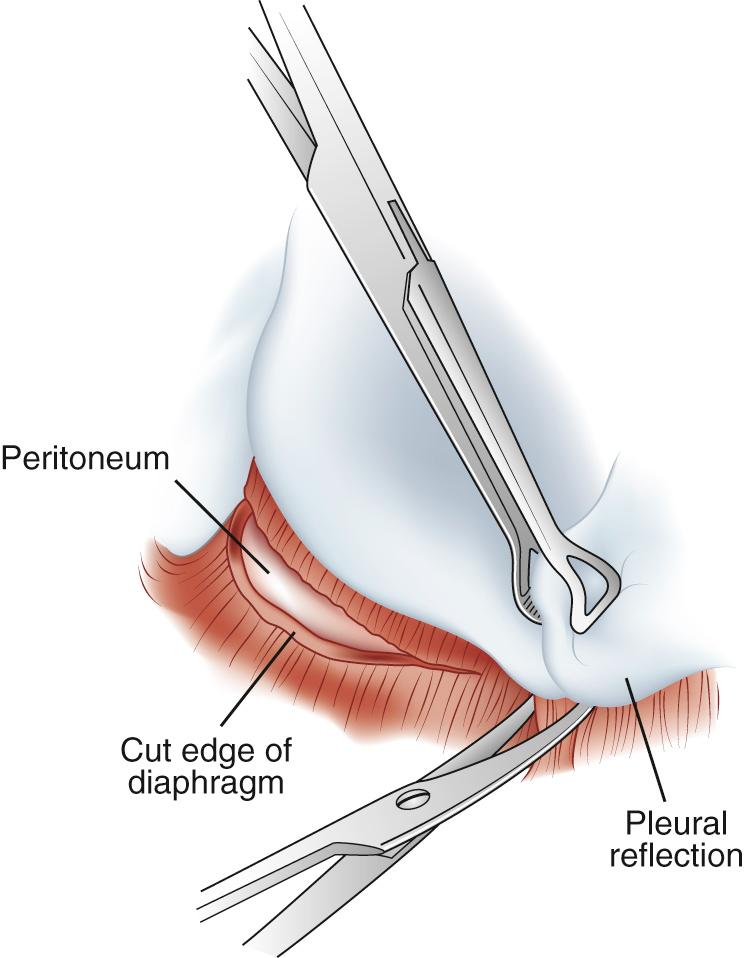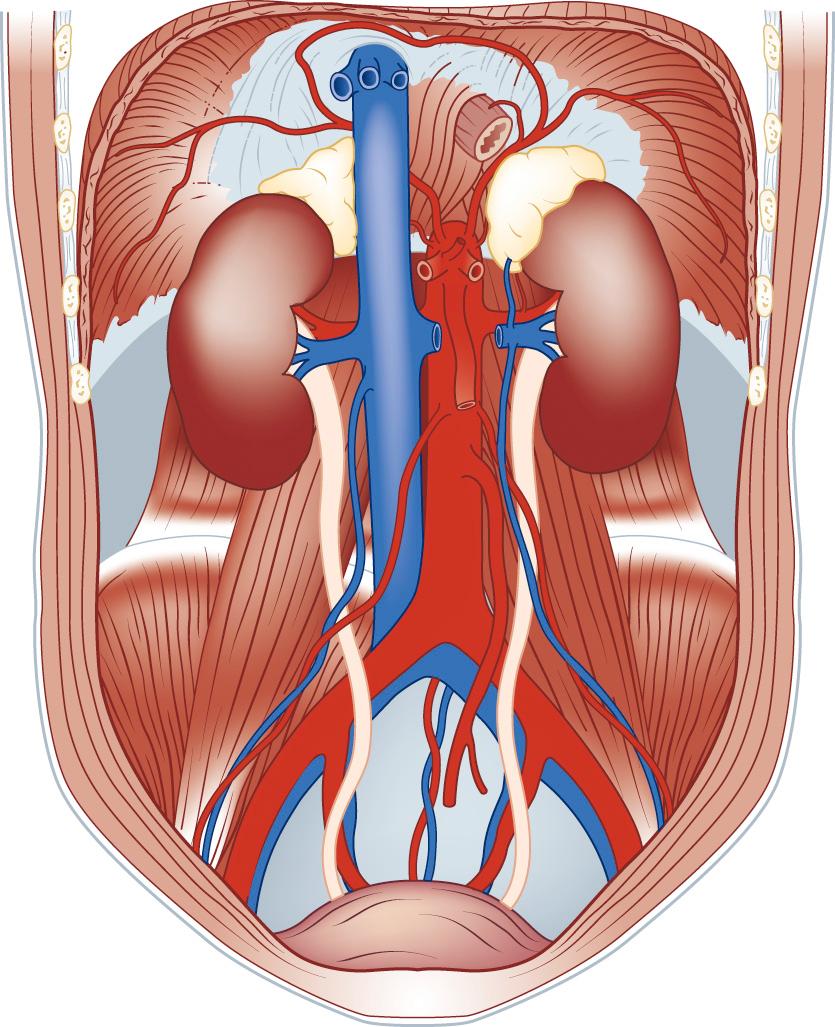Physical Address
304 North Cardinal St.
Dorchester Center, MA 02124
And on a day we meet to walk the line And set the wall between us once again. We keep the wall between us as we go. … He only says, “Good fences make good neighbors.” ROBERT FROST, “MENDING WALL”
The muscular diaphragm acts as a boundary between the positive-pressure abdominal cavity and the negative-pressure thoracic cavity. Perhaps because it is a boundary structure, or perhaps because the horizontal diaphragm is poorly visualized on a plain chest radiograph and computed tomography (CT) scan, discussion of the surgical approach to the diaphragm is neglected in many surgical textbooks.
In our opinion, there is some misinformation about the surgical treatment of the diaphragm in the current literature. This misinformation seems to reflect a lack of understanding of the basic anatomy and physiology of the diaphragm. Although diaphragmatic disease is infrequent, exposure to the diaphragm is commonplace because it is visualized during every thoracic surgical procedure and most intra-abdominal operations. Therefore, the basic principles advocated by this chapter can be verified or denied in the operating room.
Two fundamental principles can be applied to all surgical approaches to the diaphragm: (1) the muscles contract in a radial manner like the spokes of a wheel; and (2) the balance of positive pressure pushing up from the abdomen and negative pressure within the thorax created by the elastic recoil of the lung during quiet expiration displaces the central tendon into the chest, whereas contraction of the diaphragmatic muscle pulls the tendon back toward the costal margin and elevates the lower ribs, enlarging the volume of the thorax. We hope to apply these two fundamental principles in an understanding of the physiology and pathophysiology of the diaphragm. Furthermore, we believe that these two principles will allow physicians to use new technologies and to develop better operations to treat diaphragmatic disease.
In utero, the diaphragm forms from the septum transversum and pleuroperitoneal folds. The septum transversum is an unpaired ventral membrane that separates the pericardium from the remainder of the thorax and creates the central trileaflet of the diaphragmatic tendon ( Fig. 32-1 ). One of the trileaflet tendons lies within the right hemithorax, one within the left hemithorax, and the third beneath the pericardium. The dorsolateral portions of the diaphragm start with the formation of pleuroperitoneal folds. The mesothelium of the pleura binds to the mesothelium of the peritoneum in a membrane only two cell layers deep. Myotomes from C3, C4, and C5 then migrate from the lateral border toward the center of each hemithorax within the interspace between these two mesothelial layers in the seventh week of life. The outer rim of muscle of the diaphragm is from myotomes that carry nerve innervation from T7 through T12. The intestines return to the abdomen from the yolk sac in the 10th week of life and will be displaced into the chest if the diaphragm has not successfully formed (a congenital diaphragmatic hernia).

This simplified embryologic description provides several fundamental concepts of diaphragm function and pathology. Muscle contraction is in a radial manner along the lines of migration of the myotomes. Thus, fiber shortening is along the lines of a wheel spoke, between the central tendon and the circumferential rib cage. Furthermore, any congenital loss of muscle or tendon may present as a hernia within the diaphragm.
In the adult, each hemidiaphragm resembles the surface of an upside-down fairway wooden golf club. The fan-shaped tendon is like the flat metal sole plate, and the circumferential muscle curves away into the sulcus like the curved wooden club head. The muscle fascicles of the crus coalesce and attach to the lumbar spine, just as the wooden club curves down to attach to the metal shaft.
The diaphragm has three natural openings ( Fig. 32-2 ). The aortic opening is the most posterior of the three and is formed from fibers composing the right and left diaphragmatic crura. This tunnel is actually behind the diaphragm, not within it, and contains the aorta, azygos vein, and thoracic duct. The esophageal hiatus is slightly more ventral from the aortic hiatus and consists of fibers passing between the aorta and the esophagus toward the right crus and fibers converging on the pericardial tendon. The opening of the inferior vena cava lies within the confluence of the tendons of the right hemithorax and the tendon beneath the pericardium.

The fan-shaped muscle of the diaphragm arises from the internal circumference of the thorax, with attachments to the sternum, the lower six or seven ribs, and the vertebral bodies of the lumbar vertebrae. Posteriorly, the muscle fibers originate from the aponeurotic arch of the ligamentum arcuatum externum, which overrides the psoas and quadratus lumborum muscle. Laterally, the fibers of the diaphragm interdigitate with slips from the transversalis muscle of the abdomen as they originate from the ribs. The right crus is larger and longer than the left and arises from the bodies of the upper three or four lumbar vertebrae. The left crus arises from the upper two lumbar vertebral bodies.
During inspiration, the first rib is elevated and fixed by the scalene muscles of the neck. The external intercostal muscles raise, in turn, each of the lower ribs. Raising these ribs, like a bucket handle that is attached to the sternum and vertebral column, enlarges the thorax and creates the negative pressure that ventilates the lung.
The diaphragm is the major muscle of inspiration. In the resting state, the central tendon is displaced cephalad into the thorax by the positive intra-abdominal pressure. During contraction, the radial muscle fibers pull the tendon down toward the abdominal cavity like a drumhead. This further augments the negative intrathoracic pressure and further increases the positive pressure in the abdomen. The diaphragmatic crura contribute to the magnitude of displacement of the central tendon. In fact, if there were only circumferential attachments to the rib cage, the diaphragm would be limited in its ability to displace the lower ribs and to enlarge the thoracic cavity. The thicker fascicles of the crura, which lie at a 45- to 90-degree angle to the plane of the fan, pull on the anchoring lumbar spine like a lever and thus fix the central tendon in place. In descending, the fan of the diaphragm displaces the intra-abdominal viscera, which do not yield completely because they are bolstered by the anterior abdominal wall. The central tendon becomes a fixed point from which the radial muscles of the fan contract and are thus able to elevate the lower ribs. Even though the points of muscle attachment to the lumbar spine are more caudal than the attachments to the rib cage, the domed tendon acts as a fulcrum cephalad to the attachments to the rib cage. In fact, contraction of the diaphragm can raise the lower ribs only if the intra-abdominal viscera are in situ and not if the organs have been removed. Injuries to the crura have a more disproportionate effect on the respiratory function of the ipsilateral diaphragm than a similar injury to the peripheral muscle.
A forced inspiration descends the central tendon one or two rib interspaces. Under normal respiration, each hemidiaphragm provides between 15% and 25% of respiratory muscle function, with each side of the combined intercostals providing the remaining percentage. Under strained respiration, however, the diaphragm can increase its workload to provide up to 80% of the work of breathing.
The pleura adheres tightly to the top surface of the diaphragmatic central tendon and most of the musculature. It is impossible to separate the pleura from the central tendon of each hemidiaphragm. As the pleura curves off the chest wall and folds back on itself on the surface of the diaphragm, there is a circumferential diaphragmatic recess of approximately 1 cm that does not contain pleura. This recess of uncovered diaphragm is used to good advantage during an extrapleural dissection when the surgeon wraps his or her fingers into this recess and pulls downward, thus exposing the diaphragmatic musculature for division ( Fig. 32-3 ).

The peritoneum is less adherent to the undersurface of the diaphragm and can be bluntly mobilized off the diaphragm during extraperitoneal approaches to the abdominal aorta. The plane of dissection lies between the inferior phrenic artery and vein on the muscle side and the peritoneal membrane. The peritoneum separates from the central tendon of the right diaphragm to form the falciform ligament and produces an area directly under the central tendon that does not have peritoneal covering. This is known as the bare area.
The superior phrenic arteries are located on the thoracic surface of the diaphragm. They are small branches from the lower thoracic aorta and traverse the posterior diaphragm over the top portion of each crus close to the mediastinum. They terminate in small anastomoses with the musculophrenic and pericardiophrenic arteries, which are both branches from the internal mammary artery. These two arteries also supply blood to the phrenic nerve and the pericardial fat pad.
The inferior phrenic arteries lie on the undersurface of the crus and the dome of the diaphragm ( Fig. 32-4 ). They are small paired vessels with frequent anatomic variations. They can originate separately or as a common trunk from the aorta above the celiac artery or from the celiac artery itself. Alternatively, a common trunk arising from either the aorta or the celiac artery gives rise to these two arteries. On occasion, one vessel originates from the aorta and the other emerges from one of the renal arteries. Diverging near the crura, the inferior phrenic arteries then course obliquely superior and lateral along the inferior surface of the diaphragm. The left inferior phrenic artery passes posterior to the esophagus and then runs anteriorly along the lateral side of the esophageal hiatus. The right inferior phrenic artery passes behind the inferior vena cava.

Close to the posterior aspect of the central tendon, both the left and the right inferior phrenic arteries divide into a medial and a lateral branch. The medial branch extends anteriorly, close to the mediastinum. Branches of this vessel traverse the muscular portion of the diaphragm to anastomose with the musculophrenic and pericardiophrenic arteries. The lateral branch of the inferior phrenic artery courses laterally and forms anastomoses with the lower intercostal arteries. The left inferior phrenic artery provides a minor contribution to the blood supply of the lower esophagus. Both right and left inferior phrenic arteries have branches to the ipsilateral suprarenal gland; these branches are called the right and left superior suprarenal arteries.
In general, the venous anatomy in this region parallels that of the arteries. The superior phrenic veins are small and drain anteriorly to the internal mammary vein. The much larger inferior phrenic veins parallel the course of the inferior phrenic arteries. The right vein empties directly into the inferior vena cava. The left vein usually has two branches, one of which drains into the left renal or suprarenal vein, the other of which passes anterior to the esophageal hiatus and empties into the inferior vena cava.
Become a Clinical Tree membership for Full access and enjoy Unlimited articles
If you are a member. Log in here